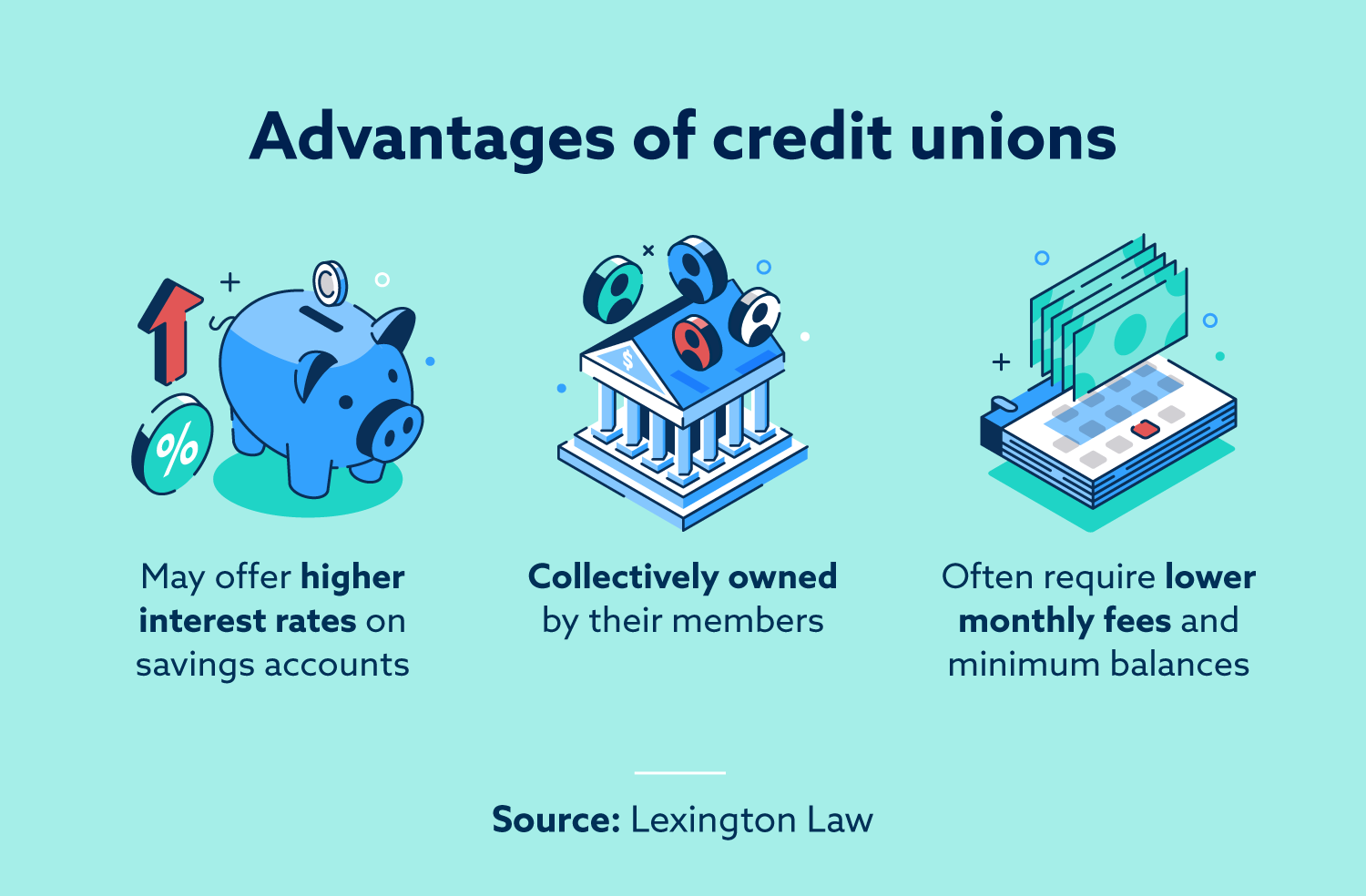Opening the Advantages of Lending Institution: Your Guide
In the realm of financial organizations, cooperative credit union stand as a usually underexplored and distinct alternative for those seeking a more individualized strategy to financial. As we dig into the complexities of cooperative credit union, a world of chances and benefits unravels, offering a look right into an economic landscape where community worths and member-focused services take spotlight. From their simple beginnings to their contemporary effect, understanding the essence of lending institution might potentially reshape the method you see and manage your financial resources.

History of Credit History Unions
Lending institution have a rich background rooted in the participating movement, going back to the 19th century. The concept of lending institution became a response to the economic needs of individuals who were underserved by conventional financial institutions. Friedrich Wilhelm Raiffeisen, a German mayor, is commonly attributed with founding the first contemporary credit score union in the mid-1800s (Credit Union in Cheyenne Wyoming). Raiffeisen developed participating financing societies to aid farmers and country communities access affordable credit and leave the clutches of usurious lenders.
The idea of people integrating to pool their sources and provide economic aid per various other spread quickly across Europe and later on to North America. In 1909, the first cooperative credit union in the United States was developed in New Hampshire, marking the beginning of a brand-new age in community-focused banking. Considering that then, cooperative credit union have actually continued to focus on the monetary well-being of their members over profit, symbolizing the cooperative principles of self-help, self-responsibility, freedom, solidarity, equal rights, and equity.
Membership Qualification Standards
Having developed a structure rooted in participating concepts and community-focused financial, lending institution preserve details membership qualification criteria to make certain positioning with their core values and objectives. These requirements usually focus on a common bond shared by potential participants, which could include aspects such as geographic place, company, business association, or membership in a particular neighborhood or organization. By needing members to meet certain eligibility needs, cooperative credit union intend to foster a feeling of belonging and shared function among their participants, strengthening the cooperative nature of these financial establishments.
Along with typical bonds, some cooperative credit union might additionally expand membership qualification to relative of present participants or people who reside in the very same house. This inclusivity aids credit scores unions expand their reach while still remaining true to their community-oriented principles. By keeping transparent and clear membership criteria, lending institution can guarantee that their participants are actively participated in sustaining the cooperative values and objectives of the institution.
Financial Products and Services
When taking into consideration the selection of offerings offered, credit rating unions give a varied variety of monetary items and services customized to satisfy the one-of-a-kind needs of their participants. Participants commonly profit from personalized customer service, as credit history unions prioritize building solid partnerships with those they offer.
Furthermore, debt unions regularly supply monetary education and counseling to help members enhance their monetary literacy and make informed decisions. Lots of lending institution also take part in common branching networks, permitting participants to access their accounts at a selection of locations across the country. In general, the range of financial services and products offered by debt unions emphasizes their commitment to satisfying the additional reading diverse needs of their members while prioritizing their financial health.

Advantages Over Conventional Financial Institutions
Demonstrating a distinct strategy to financial services, lending institution supply a number of benefits over typical financial institutions. One vital advantage is that lending institution are usually member-owned, suggesting that revenues are reinvested right into the company to supply much better rates and lower costs for participants. This cooperative structure frequently brings about much more customized customer support, as lending institution focus on participant fulfillment over optimizing earnings. In addition, credit unions are understood for their affordable rates of interest on interest-bearing accounts, financings, and charge card. This can lead to higher returns for participants who obtain or save money via the lending institution contrasted to typical financial institutions.
In addition, cooperative credit union tend to have a strong concentrate on economic education and learning and neighborhood support. They commonly give sources and workshops to help members improve their financial literacy and make sound finance decisions (Credit Union Cheyenne). By fostering a feeling of area and shared goals, lending institution can develop a more inclusive and encouraging banking environment for their participants
Community Participation and Social Impact

Furthermore, lending institution usually website here partner with regional organizations and charities to support different social reasons such as inexpensive housing, education, and medical care. By teaming up with these entities, lending institution can enhance their social impact and address important problems influencing their areas. This collective technique not just benefits those in requirement however likewise enhances the social fabric of the neighborhood by fostering a feeling of unity and assistance among its members. In significance, credit scores unions offer as catalysts for positive adjustment, driving neighborhood development and social progression with their energetic involvement and impactful efforts.
Verdict
To conclude, credit report unions have an abundant history rooted in area and participation, offering a diverse variety of financial products and solutions with competitive prices and customized consumer service. They focus on the financial health of their participants over earnings, fostering a feeling of belonging and supplying economic education and learning. By actively engaging in social impact campaigns, lending institution produce a supportive and inclusive banking setting that makes a favorable difference in both specific lives and areas.
Friedrich Wilhelm Raiffeisen, a German mayor, is commonly credited with establishing the initial contemporary credit see this website union in the mid-1800s - Credit Union Cheyenne. By needing members to satisfy specific eligibility requirements, credit report unions intend to promote a feeling of belonging and shared purpose amongst their participants, enhancing the participating nature of these monetary organizations
Additionally, credit unions regularly supply monetary education and learning and therapy to aid participants boost their financial literacy and make notified decisions. Generally, the variety of monetary products and services provided by credit history unions underscores their dedication to fulfilling the varied needs of their participants while prioritizing their financial health.
Additionally, credit report unions are known for their competitive rate of interest prices on savings accounts, finances, and debt cards.